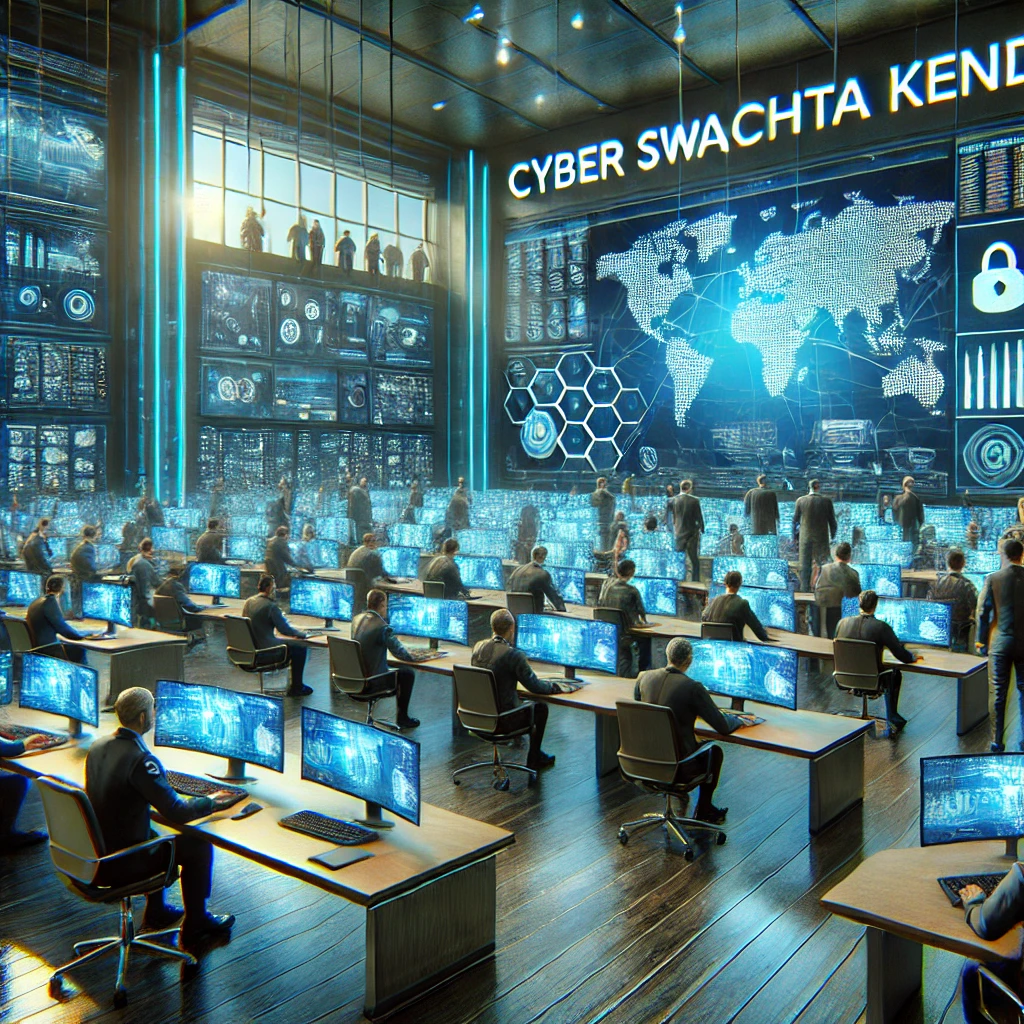The I4C is a key institution within the MHA, having thus furnished its effective cooperation with Microsoft against a serious cybersecurity threat. Because of such cooperation, over 1,000 Skype IDs used to commit crimes by blackmailers, extortionists, and cyber criminals who impersonate police and law enforcement authorities and indulge in “digital arrest” have been blocked.
What is Indian Cyber Crime Coordination Centre?
A state-of-the-art I4C was established to handle the challenges of cybercrime in India in a very strategic and coordinated manner. Based in New Delhi, it lies at the heart of coordination among different LEAs spread all over the country and other stakeholders. It is focused on developing the national response to cybercrime, protecting citizens online, and upgrading the technical and investigative skills of the law enforcement agencies.
Functions of I4C:
The functions of I4C are as follows:
1. Central Coordination: To act as the central point in the country for combating cybercrime.
2. Research and Development: To identify the research challenges of LEAs and to collaborate with academic and research institutions in India and abroad on the development of new technologies and forensic tools.
3. Policy Advocacy: Recommending changes in cyber laws to keep pace with rapidly evolving technologies, and seeking improvement in international cooperation.
- Implementation of MLAT: The facilitation and harmonization of the signing and implementation process of Mutual Legal Assistance Treaties on cybercrimes, in consultation with concerned authorities within the MHA.
- Preventing Abuse of Cyberspace: To focus on preventing the abuse of cyberspace by extremist/terrorist groups.
Key Components of I4C
- National Cybercrime Threat Analytics Unit (TAU): This is a continuous cyber threat monitoring and reporting system.
- NCRP: It is a portal for the citizens to report cybercrimes from anywhere and at any time; it works 24*7.
- NCTC: Provides specialized training in handling cybercrimes to government officials, particularly those from state law enforcement agencies.
- National Cybercrime Research and Innovation Centre: Its primary mandate is to develop indigenous tools and technologies aimed at combating cybercrimes.
- Platform for Joint Cyber Crime Coordination Team: It provides the state and territorial LEAs with a platform for sharing information and effecting coordination.
- Cybercrime Ecosystem Management Unit: It undertakes public education and awareness on cyber hygiene to prevent cybercrimes.
- National Cybercrime Forensic Laboratory-Investigation Ecosystem: It assists LEAs in conducting cyber forensic investigations.

Challenges Faced by the I4C
The Indian Cyber Crime Coordination Centre (I4C) is confronted with multiple challenges as it strives to combat the rising menace of cybercrime. Here’s a detailed look at the primary obstacles:
- Lack of Awareness: Despite the growing prevalence of cybercrimes, a significant portion of the Indian populace remains uninformed about the diverse types of cybercrimes and the preventive measures they can adopt. This lack of awareness extends to understanding the risks associated with online activities and recognizing potential threats, making individuals and organizations more vulnerable to cyber-attacks.
- Jurisdictional Issues: The nature of cyberspace, which effortlessly crosses geographic boundaries, presents unique jurisdictional challenges. Law enforcement agencies face considerable difficulties in managing crimes that originate in one state but cause harm in another. This not only complicates the legal processes but also hinders timely investigation and prosecution, often leading to delayed justice.
- Increasing Sophistication of Cybercrimes: Cybercriminals are becoming exceedingly crafty, continually refining their techniques to evade detection. They utilize advanced technologies such as encryption to mask their communications, proxy servers to hide their physical locations, and VPNs (Virtual Private Networks) to maintain anonymity online. These tactics significantly complicate the efforts of law enforcement agencies to trace the digital footprints of these criminals.
- Limited Resources: Another significant hurdle is the scarcity of resources available to law enforcement agencies tasked with tackling cybercrimes. There is often a gap in the necessary training and the technological tools needed to effectively address and mitigate cyber threats. This resource limitation not only impacts the capability to investigate and solve crimes but also affects the prevention and educational initiatives needed to enhance cyber security at a national level.
Other Initiatives by Indian Cyber Crime Coordination Centre
- Cyber Crime Volunteers Program: This engages the services of citizens who express enthusiasm for serving the nation in this fight against cybercrime.
- Citizen Financial Cyber Fraud Reporting and Management System: This ensures immediate reporting and intervention to stop fund transfers after a cyber fraud has occurred.
- National Toll-free Helpline (1930): To report online complaints related to cyber, with the help of this facility.
- CyberDost: This is a social media program aimed at increasing the awareness of the general public about the cyber threats.
| Indian Cyber Crime Coordination Centre UPSC Notes |
| 1. Under the Ministry of Home Affairs (MHA), I4C effectively dealt with cooperation with big corporations like Microsoft to handle grave cyber threats; measures included blocking more than 1,000 Skype IDs using them for criminal activities. 2. The I4C is located in New Delhi to tame cybercrime-related challenges in India in a coordinated and strategic manner, which has developed into one single central body coordinating the different law enforcement agencies (LEAs) across the country. 3. I4C serves as the national focal point for counter-cybercrime, streamlining efforts across different regions and agencies. 4. Challenges related to research are analyzed, and it engages with academic and international institutions to identify newer techniques and forensic tools to curb cybercrime. 5. I4C provides a recommendation for updates in the cyber law and helps with the harmonization of Mutual Legal Assistance Treaties (MLAT) related to cybercrime issues. 6. It works at preventing extremist and terrorist groups from misusing cyberspace and hence takes national security levels forward. 7. I4C has numerous units such as the National Cybercrime Threat Analytics Unit, the National Cybercrime Research and Innovation Center, and the Cybercrime Ecosystem Management Unit, among others, with different roles in threat monitoring to public education regarding cyber hygiene. 8. Through diverse instruments such as the NCRP, it would enable citizens to report cybercrimes anytime and anywhere, which may improve community engagement and speedy response to incidents. 9. I4C is also responsible for several initiatives that include the Cyber Crime Volunteers Program and CyberDost for training the public and engaging them towards cybercrime. |


